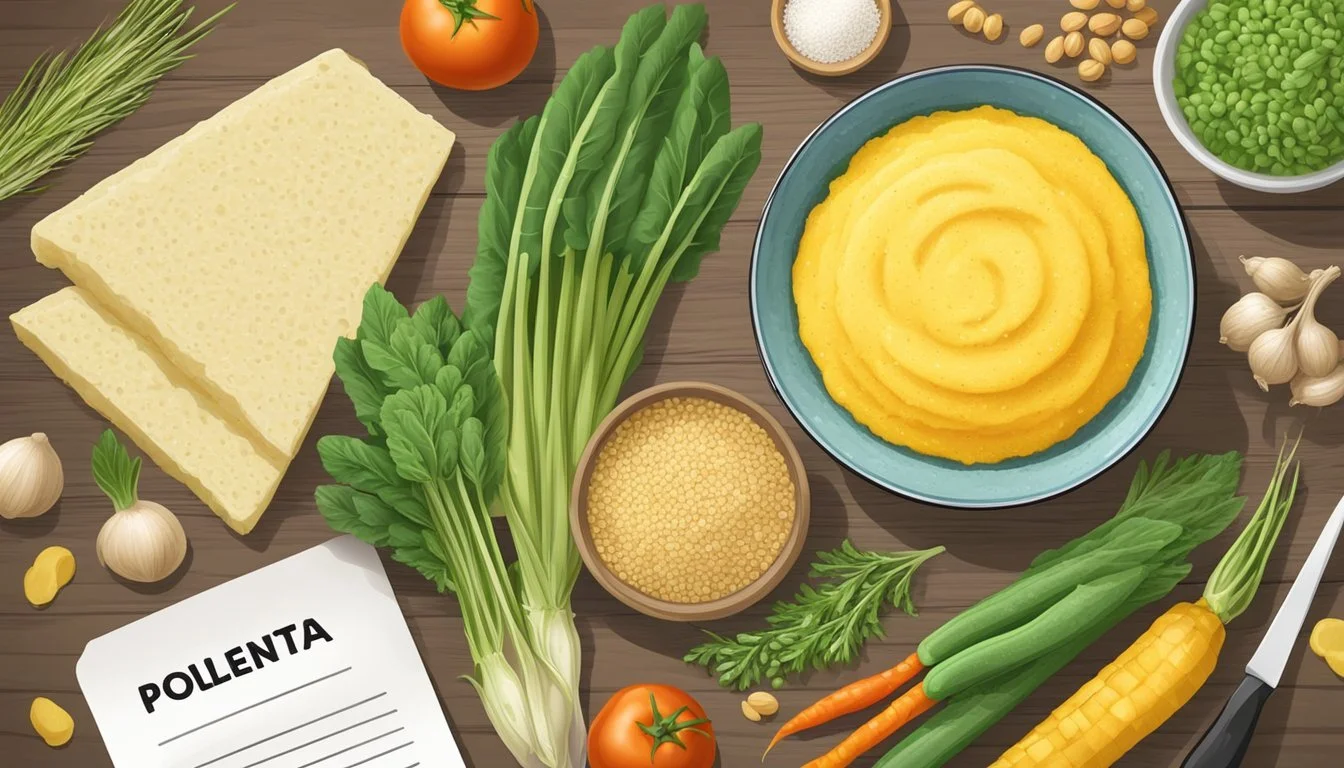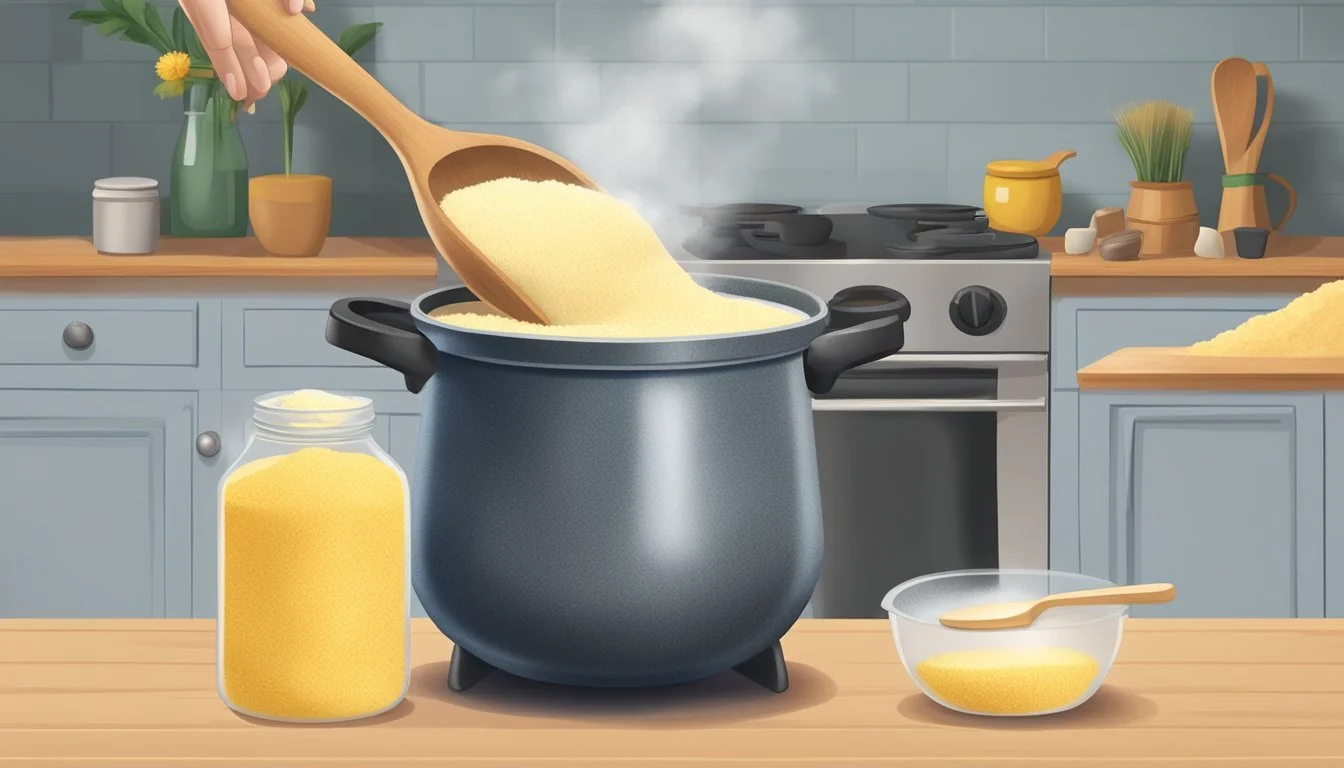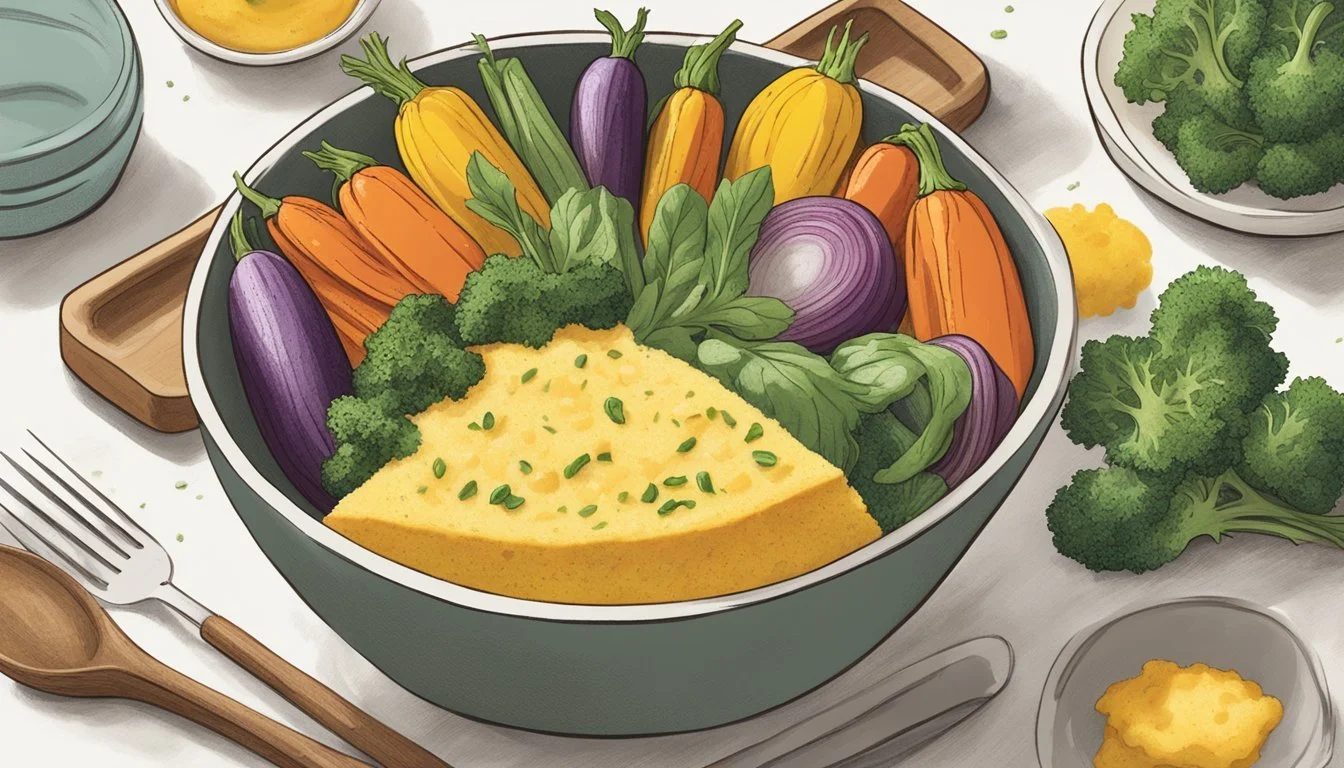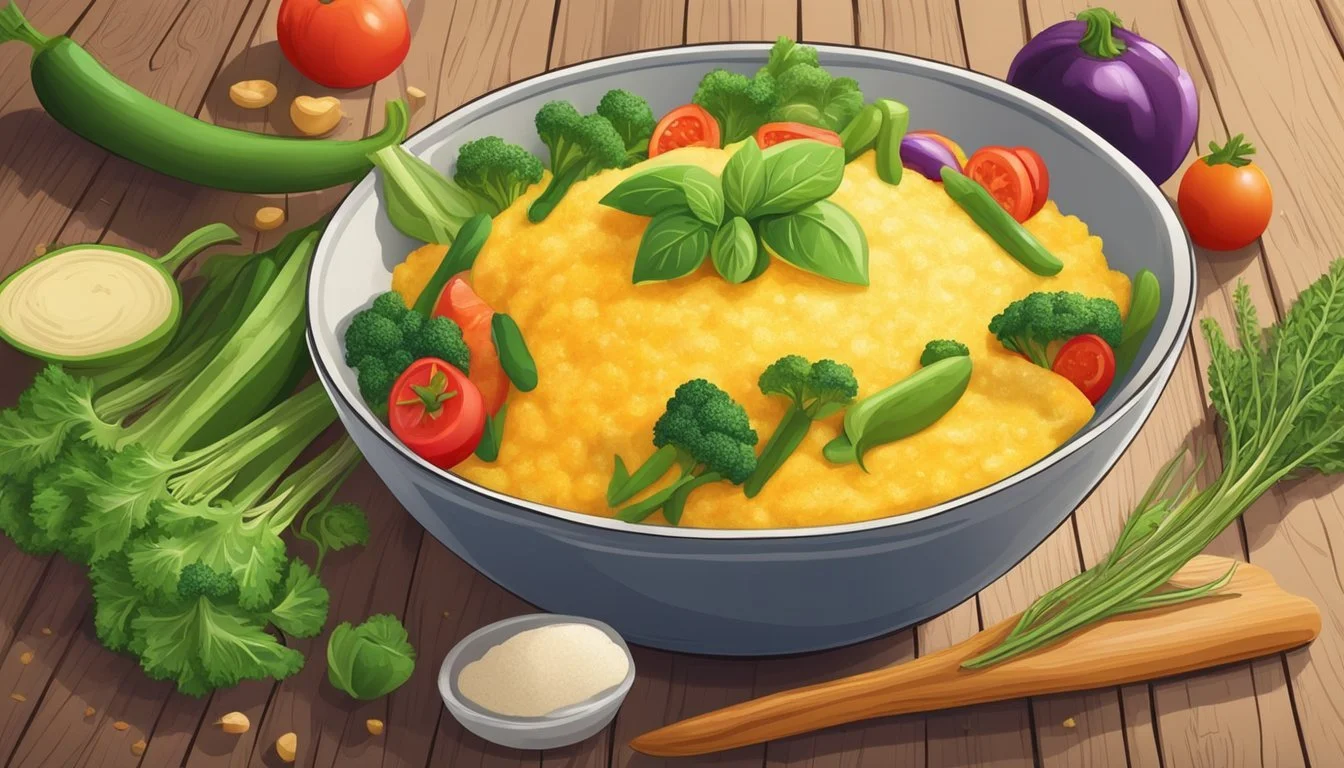Is Polenta Gluten-Free?
Understanding Its Ingredients and Dietary Profile
Polenta, a traditional Italian staple, has gained popularity as a versatile component in various culinary dishes. It is made by boiling cornmeal into a porridge, which can be served soft or allowed to solidify and then baked, fried, or grilled. Its basic ingredients, cornmeal and water, are naturally gluten-free. This characteristic makes polenta an attractive option for those adhering to a gluten-free diet, whether due to celiac disease, gluten intolerance, or personal preference.
While basic polenta is gluten-free, it is essential to consider the risk of cross-contamination. This can occur if polenta is processed in facilities that also handle wheat or other gluten-containing grains. To ensure safety, individuals should look for polenta products that are certified gluten-free, indicating they have been manufactured in a gluten-free environment. Alongside being gluten-free, polenta is lauded for its simplicity in cooking, serving as a comforting food that can be creatively embellished with various flavors and toppings.
What Is Polenta?
Polenta is a versatile dish made primarily from cornmeal and water. It is a staple in Italian cuisine, particularly in the northern regions of Italy. The dish can vary widely in texture, from coarse to fine, and has both traditional and instant preparations.
Origins and Cultural Significance
Polenta originated from Northern Italy and has played a significant role in Italian and European cuisine for centuries. It began as a food for the poor, often referred to as "peasant food," but has since become a beloved part of Italian culinary tradition. Traditionally, it is made from starchy, coarse ground cornmeal, cooked slowly with water to create a thick, creamy porridge.
Cultural Significance: A symbol of Italian heritage
Primary Ingredient: Cornmeal
Region: Northern Italy
Traditional vs. Instant Polenta
Traditional Polenta: The authentic process involves simmering water in a pot and slowly adding cornmeal while stirring consistently. The mixture is then cooked for an extended time, often 40 minutes or more, until a specific texture is achieved.
Texture Type Cooking Time Cornmeal Type Coarse Ground Polenta 40-50 minutes Coarse Finely Ground Polenta Around 30 minutes Fine
Instant Polenta: Developed for quicker preparation, instant polenta is pre-cooked and dried, allowing it to be prepared rapidly by adding boiling water. Despite the convenience it offers, some aficionados argue that it lacks the depth of flavor and texture of traditional varieties.
Convenience: Ready in about 5-10 minutes
Differences: Pre-cooked, differing texture and flavor profile
Is Polenta Gluten-Free?
Polenta is a staple food made primarily from cornmeal, which is inherently gluten-free, however concerns about cross-contamination can affect its safety for people with gluten-related disorders.
Understanding Gluten
Gluten is a protein found in certain grains such as wheat, rye, and barley. It can cause health issues for individuals with celiac disease or gluten sensitivity. These conditions trigger an immune response that can damage the lining of the small intestine when foods containing gluten are consumed. Gluten is not present in corn, the grain from which polenta is made, thus pure polenta should be safe for individuals avoiding gluten.
Cross-Contamination Concerns
Cross-contamination can occur if polenta is processed or packaged in facilities that also handle gluten-containing grains. This is a significant risk as even small traces of gluten can cause symptoms for those with celiac disease or gluten sensitivity. To minimize this risk, they should look for polenta products with a certified gluten-free label, which assures that the product has met stringent guidelines to prevent cross-contamination. It is also recommended to purchase polenta that is packaged rather than in bulk bins to further reduce the risk of gluten exposure.
Nutritional Profile
Polenta is a versatile grain dish with a notable nutritional profile, consisting primarily of carbohydrates and also offering protein and fiber without gluten.
Macronutrients and Fiber
Polenta is essentially made from cornmeal, making it a rich source of carbohydrates, which are vital for energy. The following table outlines the macronutrient content in a typical serving of plain polenta:
Nutrient Amount per 3/4 cup serving Calories Approx. 80-100 kcal Carbohydrates Approx. 15-20 g Protein 2-3 g Fat 0.5-1 g Fiber 1-2 g
Vitamins and Minerals
Although polenta is not a significant source of vitamins, it does contain small amounts of various vitamins and minerals. One micronutrient found in polenta is iron; a 30-gram serving can provide around 0.6 mg of iron. It may also contain trace amounts of carotenoids, which the body can convert into vitamin A.
Health Benefits
The starch in polenta is considered a complex carb, which can be beneficial for blood sugar control, making it a suitable dietary option for people with diabetes. Additionally, the fiber content in polenta helps maintain digestive health. While not abundant in antioxidants, polenta does contain some, which may offer health benefits by neutralizing free radicals. Polenta also provides plant protein, which is important for overall health and muscle maintenance.
Cooking Polenta
Polenta is versatile and can be cooked to a creamy consistency or allowed to cool and solidify into a loaf that can be baked, fried, or grilled. This section explores how to prepare and cook polenta through different techniques, with attention to ingredients and cooking methods.
Preparation Guidelines
Before cooking polenta, one should measure the ingredients accurately. Traditional polenta is simple, requiring only cornmeal, water, and a pinch of salt. For a richer taste, cooks may use milk, chicken stock, or vegetable stock instead of water. For creaminess, cheese and butter are popular additions.
Basic Ratio: The standard ratio is 4 parts liquid to 1 part polenta cornmeal.
Seasoning: Add salt to the cooking liquid to infuse the polenta with flavor as it cooks.
Cooking Techniques
The primary method of cooking polenta involves simmering cornmeal in the liquid until it absorbs the water and becomes the desired texture.
Stove Top:
Bring the liquid to a boil, then gradually whisk in the cornmeal to prevent clumps.
Reduce heat to a low simmer, and continue stirring regularly for about 30 to 40 minutes until thickened.
Instant Pot:
Combine liquid, cornmeal, and salt in the pot.
Cook on high pressure for a set time, usually around 9 minutes, then quick release the pressure.
Quick-Cooking Polenta:
Use pre-processed cornmeal that cooks in a fraction of the time — commonly 5 to 10 minutes.
Follow the package instructions for proper water-to-polenta ratios and cooking times.
After Cooking:
One can stir in additional ingredients such as cheese, butter, or herbs for extra flavor.
If desired, transfer cooked polenta to a greased pan, refrigerate until firm, and then slice to grill or fry.
Whether one prefers their polenta creamy or structured into a firm tube for frying or grilling, these guidelines will help achieve the correct preparation and cooking technique.
Serving Suggestions
Polenta's adaptable nature makes it an excellent base for a variety of ingredients, from cheese to meat, and can be tailored to suit both sweet and savory dishes. It often finds its place as a fulfilling side dish in restaurants or a main course when enriched with robust flavors.
Dishes and Pairings
Polenta pairs well with a range of ingredients. Savory options include topping creamy polenta with sauces, such as marinara or ragù, and adding vegetables or meat for a complete meal. It serves as an excellent side dish to dishes like osso buco or chicken cacciatore (What wine goes well with chicken cacciatore?), complementing the main proteins with its smooth, neutral palate.
Breakfast: Polenta can be a warm breakfast alternative to grits, often enhanced with herbs or cheese.
Polenta Pizza: (What wine goes well with pizza?) A creative twist is using firm, cooked polenta as a base for polenta pizza, topped with traditional pizza ingredients.
Creative Uses
Polenta shows versatility beyond traditional plating. Once cooked and solidified, polenta can be cut into shapes and either baked, grilled, or even fried to create a delightful texture contrast.
Baked: Slices topped with cheese and herbs, then baked until golden.
Fried or Grilled: Polenta chunks make a great appetizer or snack.
For those with a gluten intolerance, they can confidently turn to polenta as a gluten-free substitute in many dishes where grains might otherwise be used.
Purchasing and Storing
When shopping for polenta and planning for its storage, consumers should be vigilant about the type of product they select and understand the best practices to maintain its quality over time.
Selecting the Right Product
Brands vary in their production processes, and while polenta is generally gluten-free, it is crucial to look for labels indicating that the product is certified gluten-free, which suggests safe handling to prevent cross-contamination. Shoppers seeking gluten-free options should prefer brands that explicitly cater to gluten-free diets. The packaging should be intact with no tears, which can preserve the polenta from external contaminants. In terms of ingredients, yellow cornmeal or whole grain cornmeal should be listed without any wheat or gluten-containing additives.
Storage and Shelf Life
Once purchased, pre-cooked polenta should be stored in a shallow airtight container to inhibit bacterial growth. If one has uncooked polenta, which usually comes in dry form, it should be kept in a cool, dry place. The shelf life of uncooked polenta can last several years if stored properly, whereas pre-cooked polenta should be consumed much sooner. Store-bought polenta comes in various forms, including in tubes; these should be covered tightly with plastic wrap or placed in an airtight container to minimize exposure to air. Always pat dry any excess moisture with paper towels before storing to maintain the polenta's appearance and texture.
Polenta in Special Diets
Polenta, a staple of Italian cuisine made from cornmeal, often comes into question when considering special diets, especially those requiring gluten-free options. It plays a pivotal role for individuals with celiac disease and those with gluten sensitivity due to its natural lack of gluten.
Celiac Disease and Gluten-Free Diets
For individuals with celiac disease, a strict gluten-free diet is a medical necessity, as ingestion of gluten can lead to significant health complications. Polenta is inherently gluten-free because it is derived from corn, which does not contain gluten, unlike wheat flour, durum wheat, semolina, spelt, or farina. However, it is vital that those with celiac disease ensure that the polenta they consume has not been contaminated during processing or packaging. Look for labels specifying that the polenta is "certified gluten-free," minimizing the risk of cross-contamination.
Consideration Guidance for Celiac Disease and Gluten-Free Diets Source Ingredient Ensure polenta is made from pure, gluten-free cornmeal. Cross-Contamination Choose polenta products labeled as "certified gluten-free." Additives Check for any additives that may contain hidden sources of gluten.
Other Dietary Considerations
Besides celiac disease and gluten sensitivity, polenta can be suitable for various dietary needs due to its versatile nature. Polenta can be a nutritious part of a balanced diet providing essential vitamins and minerals. For those managing diabetes, polenta has a relatively low glycemic index, especially when eaten in moderation and as part of a meal balanced with proteins and fats. It's also free from common allergens found in gluten-containing grains, making it a safe alternative.
However, it is important to note that some commercially available polenta products may include additives or flavorings that are not gluten-free. Always read ingredient labels carefully.
Dietary Need Polenta Guidance Diabetes Consume in moderation due to carbohydrate content. Nutrition Provides a source of vitamins and minerals; check fortification on labels. Allergies An alternative for those allergic to gluten-containing grains.
Common Questions About Polenta
Polenta has risen in popularity due to its versatility and gluten-free nature. Below are focused answers to questions often asked about this corn-based dish.
Is Polenta Healthier Than Pasta?
When considering polenta and pasta, one should assess the individual dietary needs. Polenta, made from ground cornmeal, typically has less calories and carbohydrates than pasta, which is made from wheat. The absence of gluten in polenta makes it a favorable option for those with celiac disease or gluten sensitivity. In comparison to refined pasta, polenta also offers a different array of vitamins and minerals. It should be noted that pasta can sometimes be enriched with additional nutrients, and whole-grain pastas provide more fiber and protein.
Can Polenta Be Used as a Substitute for Other Ingredients?
Indeed, polenta serves as a versatile substitute in cooking. Its creamy texture allows it to stand in for dishes that use components like rice or oatmeal. Polenta can be a base for toppings similar to grits or rice, and when cooled and solidified, it can be sliced and used in place of bread or pizza crust. Moreover, due to its similar granular nature, it can replace ingredients such as quinoa in salads or side dishes. However, one should always keep in mind the flavor profile differences between polenta and these other grains when substituting in recipes.








